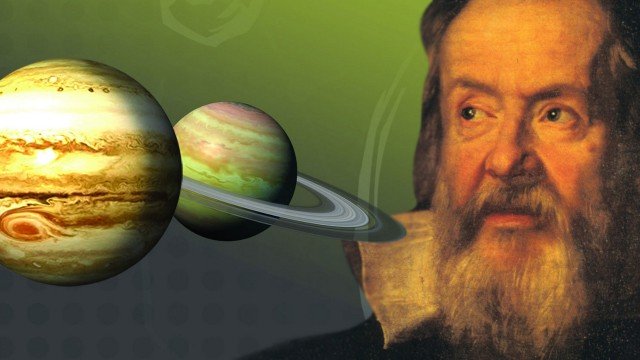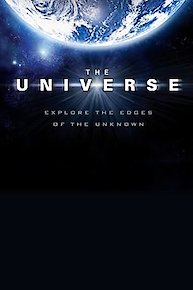
Physics and Our Universe: How It All Works
Where to Watch Physics and Our Universe: How It All Works
Watch Physics and Our Universe: How It All Works Season 1 Episode 60 Now
Watch Physics and Our Universe: How It All Works Season 1 Episode 59 Now
Watch Physics and Our Universe: How It All Works Season 1 Episode 58 Now
Watch Physics and Our Universe: How It All Works Season 1 Episode 57 Now
Watch Physics and Our Universe: How It All Works Season 1 Episode 56 Now
Watch Physics and Our Universe: How It All Works Season 1 Episode 55 Now
Watch Physics and Our Universe: How It All Works Season 1 Episode 54 Now
Watch Physics and Our Universe: How It All Works Season 1 Episode 53 Now
Watch Physics and Our Universe: How It All Works Season 1 Episode 52 Now
Watch Physics and Our Universe: How It All Works Season 1 Episode 51 Now
Watch Physics and Our Universe: How It All Works Season 1 Episode 50 Now
Watch Physics and Our Universe: How It All Works Season 1 Episode 49 Now
Watch Physics and Our Universe: How It All Works Season 1 Episode 48 Now
Watch Physics and Our Universe: How It All Works Season 1 Episode 47 Now
Watch Physics and Our Universe: How It All Works Season 1 Episode 46 Now
Watch Physics and Our Universe: How It All Works Season 1 Episode 45 Now
Watch Physics and Our Universe: How It All Works Season 1 Episode 44 Now
Watch Physics and Our Universe: How It All Works Season 1 Episode 43 Now
Watch Physics and Our Universe: How It All Works Season 1 Episode 42 Now
Watch Physics and Our Universe: How It All Works Season 1 Episode 41 Now
Watch Physics and Our Universe: How It All Works Season 1 Episode 40 Now
Watch Physics and Our Universe: How It All Works Season 1 Episode 39 Now
Watch Physics and Our Universe: How It All Works Season 1 Episode 38 Now
Watch Physics and Our Universe: How It All Works Season 1 Episode 37 Now
Watch Physics and Our Universe: How It All Works Season 1 Episode 36 Now
Watch Physics and Our Universe: How It All Works Season 1 Episode 35 Now
Watch Physics and Our Universe: How It All Works Season 1 Episode 34 Now
Watch Physics and Our Universe: How It All Works Season 1 Episode 33 Now
Watch Physics and Our Universe: How It All Works Season 1 Episode 32 Now
Watch Physics and Our Universe: How It All Works Season 1 Episode 31 Now
Watch Physics and Our Universe: How It All Works Season 1 Episode 30 Now
Watch Physics and Our Universe: How It All Works Season 1 Episode 29 Now
Watch Physics and Our Universe: How It All Works Season 1 Episode 28 Now
Watch Physics and Our Universe: How It All Works Season 1 Episode 27 Now
Watch Physics and Our Universe: How It All Works Season 1 Episode 26 Now
Watch Physics and Our Universe: How It All Works Season 1 Episode 25 Now
Watch Physics and Our Universe: How It All Works Season 1 Episode 24 Now
Watch Physics and Our Universe: How It All Works Season 1 Episode 23 Now
Watch Physics and Our Universe: How It All Works Season 1 Episode 22 Now
Watch Physics and Our Universe: How It All Works Season 1 Episode 21 Now
Watch Physics and Our Universe: How It All Works Season 1 Episode 20 Now
Watch Physics and Our Universe: How It All Works Season 1 Episode 19 Now
Watch Physics and Our Universe: How It All Works Season 1 Episode 18 Now
Watch Physics and Our Universe: How It All Works Season 1 Episode 17 Now
Watch Physics and Our Universe: How It All Works Season 1 Episode 16 Now
Watch Physics and Our Universe: How It All Works Season 1 Episode 15 Now
Watch Physics and Our Universe: How It All Works Season 1 Episode 14 Now
Watch Physics and Our Universe: How It All Works Season 1 Episode 13 Now
Watch Physics and Our Universe: How It All Works Season 1 Episode 12 Now
Watch Physics and Our Universe: How It All Works Season 1 Episode 11 Now
Watch Physics and Our Universe: How It All Works Season 1 Episode 10 Now
Watch Physics and Our Universe: How It All Works Season 1 Episode 9 Now
Watch Physics and Our Universe: How It All Works Season 1 Episode 8 Now
Watch Physics and Our Universe: How It All Works Season 1 Episode 7 Now
Watch Physics and Our Universe: How It All Works Season 1 Episode 6 Now
Watch Physics and Our Universe: How It All Works Season 1 Episode 5 Now
Watch Physics and Our Universe: How It All Works Season 1 Episode 4 Now
Watch Physics and Our Universe: How It All Works Season 1 Episode 3 Now
Watch Physics and Our Universe: How It All Works Season 1 Episode 2 Now
Watch Physics and Our Universe: How It All Works Season 1 Episode 1 Now

Physics and Our Universe: How It All Works is an enlightening educational series from The Great Courses. Released in 2011, this show, presented as a series of lectures, seeks to bring the fascinating world of physics to a broad audience. Each episode explores different subjects within the field, gradually building up an intricate tapestry of knowledge about the physical universe and its inherent laws.
The key feature of Physics and Our Universe: How It All Works is its comprehensive approach to the intriguing subject of physics, explained from the ground up. The series is designed to help viewers of all knowledge levels to understand and appreciate the principles that govern the universe, thereby enhancing their appreciation of life and existence.
Hosted by Professor Richard Wolfson, a distinguished physicist and educator from Middlebury College, the series leans heavily on his deep expertise and charismatic teaching style. Wolfson masterfully bridges the gap between common perceptions of physics as a formidable subject and the engaging reality that it has the power to answer some of the most profound questions about our existence.
The series contains 60 episodes spanning various subjects within physics. Each lecture functions as an individual lesson, yet all of them are interconnected, painting a larger picture of the physics that underpins our universe. The interesting topics covered range from elementary particles and quantum mechanics to cosmology and thermodynamics, with an occasional dip into the world of string theory and dark matter.
With each episode, viewers are introduced to the forces, theories, and structures that define our universe, such as Newton's laws of motion, Einstein's theory of relativity, the structure of atoms, the properties of light, or the principle of conservation of energy. Yet, as deeply as the series dives into these complex subjects, the language used is always clear and accessible, ensuring that even the most arcane concepts are completely understandable to the non-scientifically inclined.
The series takes an intriguing approach by linking the theoretical aspects of physics with real-world implications and examples. This show does not relegate physics to the realm of abstract ideas, but demonstrates its relevance to everyday life. You will learn how physics underlies everything from the way you drive your car, through climate change and energy production, to the functioning of the universe.
One of the strengths of Physics and Our Universe: How It All Works is its capacity to stimulate curiosity. Rather than providing a dry, textbook-style explanation, the series presents physics as an ongoing adventure into the unknown, discussing not only what scientists know, but also the mysteries they are still trying to solve.
Visual aids, engaging graphics, and vivid descriptions support the comprehensive walkthrough of physics. Demonstrations, diagrams, and 3D models are in abundant use throughout the series, helping complex ideas and concepts be easily visualized by the viewer. Physics and Our Universe: How It All Works has been lauded for its production quality, illustrative narrative and, of course, its carefully coordinated delivery of elaborate concepts in a manner that respects the intelligence of its audience.
Despite the breadth and depth of the subject matter, Physics and Our Universe: How It All Works maintains a structured flow. It starts with the fundamentals and then gradually proceeds to more complex principles, mirroring a journey from earthly physics to the cosmic mysteries beyond. This organization fosters a building-block understanding, allowing viewers to solidify their grasp of earlier concepts before tackling later ones.
Whether you're a novice with a burgeoning interest in physics or a seasoned veteran looking to refresh your knowledge base, Physics and Our Universe: How It All Works caters to a wide array of audiences. The clear and eloquent explanations provided by Professor Wolfson are a boon for those wanting to venture beyond rudimentary physics without being overwhelmed by the intensity of the topic.
In conclusion, Physics and Our Universe: How It All Works from The Great Courses offers a comprehensive, accessible, and captivating foray into the principles that rule our universe. Its potent blend of education, entertainment, and stimulation ensures it's not just a course for learning, but also a powerful journey into the heart of what makes our universe tick.
Physics and Our Universe: How It All Works is a series categorized as a canceled/ended. Spanning 1 seasons with a total of 60 episodes, the show debuted on 2011. The series has earned a no reviews from both critics and viewers. The IMDb score stands at undefined.








































